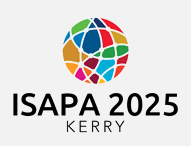Start Date
19-6-2025 10:30 AM
End Date
19-6-2025 12:00 PM
Abstract
Timo Ala-Vähälä, PhD, Finnish Society of Sport Sciences
Venla Väyrynen, M.H.Sc., Finnish Society of Sport Sciences
Physical activity (PA) and barriers of adults with special needs – how do age, gender, living environment and the nature of special needs affect it?
Introduction. People with special needs face more barriers to participating in activities such as sports services. In Finland, special sports services are offered by municipalities, sports associations, civil society organizations, and the private sector. Self-directed PA facilities exist but are unevenly distributed. This study examined barriers to PA and how age, gender, disability and living environment relate to PA levels.
Method. Two web surveys conducted in 2020 and 2023 targeted individuals with special needs for sports services. The surveys received 1,202 and 2,047 respondents, respectively, representing all Finnish regions. However, men were underrepresented, making less than one-third of respondents. Participants were categorized by age, gender, living environment, and type of disability.
Results. Physical inactivity was highest among adults (aged 30–64 years). No significant differences in PA levels were found between men and women. Respondents in sparsely populated areas were less active, which was linked to fewer available sports services. Inactivity was most prevalent among individuals with mental health issues. Barriers to PA included limitations due to disabilities or illnesses, lack of motivation, and non-sportive identities.
Conclusions. People with disabilities or chronic illnesses form a highly diverse group: different types of disabilities and illnesses present their own unique challenges. Additionally, factors related to the living environment and living situation increase the diversity. Moreover, men and women appear to have slightly different ways of using sports services.
Literature
Ala-Vähälä, T., Prinkey, V., Roitto, R., (2024). Liikkujakysely soveltavan liikunnan kohderyhmälle. In Prinkey, V., Roitto. R., (ed.) Liikuttaako 2023? Toimintarajoitteisille henkilöille suunnatun liikkujakyselyn ja seura- ja yhdistyskyselyn raportti. Liikuntatieteellisen Seuran tutkimuksia ja selvityksiä 26. Turenki 2024.
Saari, A., Ala-Vähälä, T. (2021). Liikkujakysely. In Saari, A. (ed.) 2021. Liikuttaako? Toimintarajoitteisille henkilöille suunnatun Liikkujakyselyn ja Seurakyselyn raportti. Suomen Paralympiakomitea, raportti 1/2021.
Recommended Citation
Ala-Vähälä, Timo PhD and Väyrynen, Venla M.H.Sc., "Physical activity (PA) and barriers of adults with special needs – how do age, gender, living environment and the nature of special needs affect it?" (2025). International Symposium of Adapted Physical Activity and International Symposium on Physical Activity and Visual Impairment and Deafblindness. 30.
https://sword.cit.ie/isapa/2025/day4/30
Physical activity (PA) and barriers of adults with special needs – how do age, gender, living environment and the nature of special needs affect it?
Timo Ala-Vähälä, PhD, Finnish Society of Sport Sciences
Venla Väyrynen, M.H.Sc., Finnish Society of Sport Sciences
Physical activity (PA) and barriers of adults with special needs – how do age, gender, living environment and the nature of special needs affect it?
Introduction. People with special needs face more barriers to participating in activities such as sports services. In Finland, special sports services are offered by municipalities, sports associations, civil society organizations, and the private sector. Self-directed PA facilities exist but are unevenly distributed. This study examined barriers to PA and how age, gender, disability and living environment relate to PA levels.
Method. Two web surveys conducted in 2020 and 2023 targeted individuals with special needs for sports services. The surveys received 1,202 and 2,047 respondents, respectively, representing all Finnish regions. However, men were underrepresented, making less than one-third of respondents. Participants were categorized by age, gender, living environment, and type of disability.
Results. Physical inactivity was highest among adults (aged 30–64 years). No significant differences in PA levels were found between men and women. Respondents in sparsely populated areas were less active, which was linked to fewer available sports services. Inactivity was most prevalent among individuals with mental health issues. Barriers to PA included limitations due to disabilities or illnesses, lack of motivation, and non-sportive identities.
Conclusions. People with disabilities or chronic illnesses form a highly diverse group: different types of disabilities and illnesses present their own unique challenges. Additionally, factors related to the living environment and living situation increase the diversity. Moreover, men and women appear to have slightly different ways of using sports services.
Literature
Ala-Vähälä, T., Prinkey, V., Roitto, R., (2024). Liikkujakysely soveltavan liikunnan kohderyhmälle. In Prinkey, V., Roitto. R., (ed.) Liikuttaako 2023? Toimintarajoitteisille henkilöille suunnatun liikkujakyselyn ja seura- ja yhdistyskyselyn raportti. Liikuntatieteellisen Seuran tutkimuksia ja selvityksiä 26. Turenki 2024.
Saari, A., Ala-Vähälä, T. (2021). Liikkujakysely. In Saari, A. (ed.) 2021. Liikuttaako? Toimintarajoitteisille henkilöille suunnatun Liikkujakyselyn ja Seurakyselyn raportti. Suomen Paralympiakomitea, raportti 1/2021.


